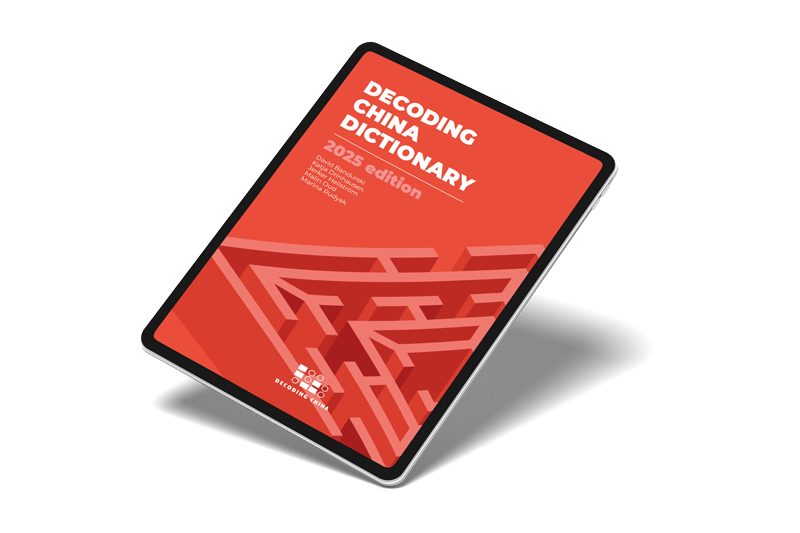
KEY TERM
Market Economy
[ 市场经济 ]
[ 市场经济 ]
Market Economy

Brief
UNCTAD defines a market economy as “a national economy of a country that relies heavily upon market forces to determine levels of production, consumption, investment, and savings without government intervention”.
China began its transition from a socialist command economy four decades ago, and since the early 1990s it calls itself a ”socialist market economy” under which markets were to extend to all main sectors of the economy. Following years of market-led growth, China’s current model is characterised by more government influence over the economy than in the past, and then is found in most middle-income and developed economies, with a prominent role given to state banks, firms, and government five-year plans. This model is sometimes referred to as Market-Leninism.
The Chinese Party State actively manages competition, often favouring state-owned enterprises and national champions over private firms, particularly in strategic sectors. Market access can be restricted based on political and strategic considerations rather than purely economic factors, which is a point of contention when discussing free market principles. Since taking power in 2012, Xi Jinping has increasingly stressed national security and self-sufficiency as paramount to economic openness, underlining how China’s homegrown version of a market economy is unlikely to give market forces free rein at the expense of state control.
Analysis
Following spontaneous experiments with individual household agriculture in the late 1970s, the Chinese Communist Party (CCP) gradually relaxed control of farming and then urban economic activity. It permitted private businesses and foreign investment.
The concept of “socialist market economy” was endorsed by the 14th Congress of the Communist Party in 1992 and was enshrined in the PRC constitution in 1993, when it replaced “planned economy on the basis of socialist public ownership” as China’s national economic system.
After decades of protectionism and state economic planning under Mao, his successor, Deng Xiaoping, had to avoid the impression that he was challenging Mao’s legacy. Deng, however, famously declared that “it doesn’t matter whether a cat is black or white, as long as it catches mice,” signalling pragmatism about market mechanisms.
With the socialist market economy model Deng focused on economic growth as the primary goal. Nevertheless, he maintained that the state had to play a leading role in economic planning and development. The ultimate control over strategic sectors would be retained by the Communist Party, which had to maintain its prerogative to intervene extensively in market operations when called for.
In preparation for its accession to the World Trade Organisation in 2001, China adopted a range of market-opening measures which continued during the early days of its WTO membership and contributed to over a decade of double-digit economic growth. None of these policies, however, challenged the strategy of the state maintaining a leading role in what were regarded as strategic industries, such as steel, energy, autos, aerospace, shipbuilding, and military industries.
Shortly after assuming power in 2012, Xi Jinping articulated a vision of market mechanisms playing a pivotal role in resource allocation. Progress has, however, been limited. Few of the reforms that Xi envisioned have been carried out and the Party’s role in the economy has instead become even more pronounced. Prominent Chinese economist Mao Yushi, an outspoken critic of the government’s failure to reduce public ownership, has argued that the state’s dominance in the domestic market “is just as if a referee would join a football game”.
In recent years, these policies have spurred some Western economies to address dependency on China and to boost domestic competitiveness. Chinese officials have responded by portraying calls for balanced and fair trade, and efforts to respond to industrial overcapacity in China, as a pretext for Western protectionist policies. Meanwhile, China has rhetorically embraced economic globalisation, notably reflected by Xi Jinping’s keynote address at the World Economic Forum in 2017, where he appeared as a champion of free and open global markets. Despite China’s own shortcomings in terms of market openness, these narratives have gained traction, not least in the Global South, especially as some Western countries have increased their own protectionist and statist policies.
How to cite the Decoding China Dictionary:
The Decoding China Project (eds.) The Decoding China Dictionary (2025 ed.), 2025. Berlin: The Decoding China Project. Available from: https://decodingchina.eu/.
Research related to this term was supported by:

Related Articles That Might
Interest You






